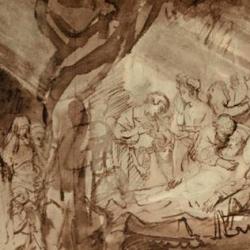The dead have gone missing from the realm of the living,” observes Candi Cann in Virtual Afterlives (xi). “They are, like their memorials, repackaged, the very disjuncture of death denies in its most crucial moment.”
Death has moved from the home and family to the hospital and the funeral home. “Death and dying, with rare exceptions, have become compartmentalized from everyday life, and death and dying are a business” (2).
She sees this effort to displace the dead from the realm of the living even in widely accepted practices like embalming: “Bodies and their roles in death and bereavement can be highlighted by embalming . . . and the emphasis placed on viewing them, or having them present. In this way, corpses become central actors in funerals and grieving ceremonies. The dead body, in its encounter by the grieving, actively helps in the bereavement process by impressing on the living that it is not longer present, but dead” (19).
But embalming the body can move in an opposing direction: “Embalmment in the last century was not for the preservation of the body and its ultimate resurrection (as in ancient Egyptian society), but rather for the avoidance of the natural process of decay after death. In this way, embalmment was not, as it might first seem, a way of bringing us closer to the dead, but actually a way of further estranging us from them. The dead, as they are, are not presentable and acceptable company; they must first be sewn shut, stuffed, drained, transfused, and made up before we deem them acceptable. Dead bodies are no longer part of our lives unless they seem like the living” (19).
Sealed, airtight coffins manifest similar motives: “It is the body itself that causes deterioration of the body—not the influence of outside elements introduced into the coffin” (20). No coffin can actually prevent the corpse from acting like a corpse—from decaying. But we make a futile gesture of keeping the dead like the living by sealing them in useless, but very expensive, coffins.















